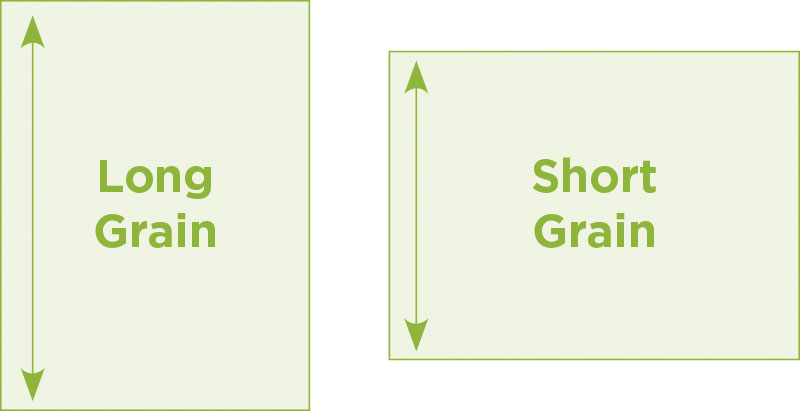Paper Grain
Like timber, almost all paper has a grain. That is, it bends more easily one direction than it does the other. If you bind a book with the paper grain opposing the binding, the book will not open as well, it will tend to warp/wrinkle at the binding edge and it will not be as strong.
The grain of the paper should be running parallel to the binding edge. Yet sometimes it is difficult to judge which direction the grain runs in. With thinner papers it is harder to tell the grain direction, heavier papers are more obvious and easier to determine.
Here are three quick tests to check for grain direction:
- Tear Test – Take a sheet of paper and tear it horizontally and then vertically. One tear should have been straighter than the other. The tear that was straighter is parallel to the grain, the jagged tear is going across the grain.
- Bend Test – Take a sheet of paper, bend the paper (don’t fold or crease it) horizontally and vertically. There will be less resistance in one direction than the other. The bend with less resistance is parallel to the grain.
- Fingernail Test – Take a sheet of paper and using the fingernails of your thumb and middle finger pinch the paper and slide them across and then down the paper. One direction should produce a “wave”, the wave indicates that you went across the grain.
Almost all A4 photocopy paper is cut so that it is suitable for binding on the long edge (portrait). This suits many people as portrait A4 books are much more common than landscape ones.
